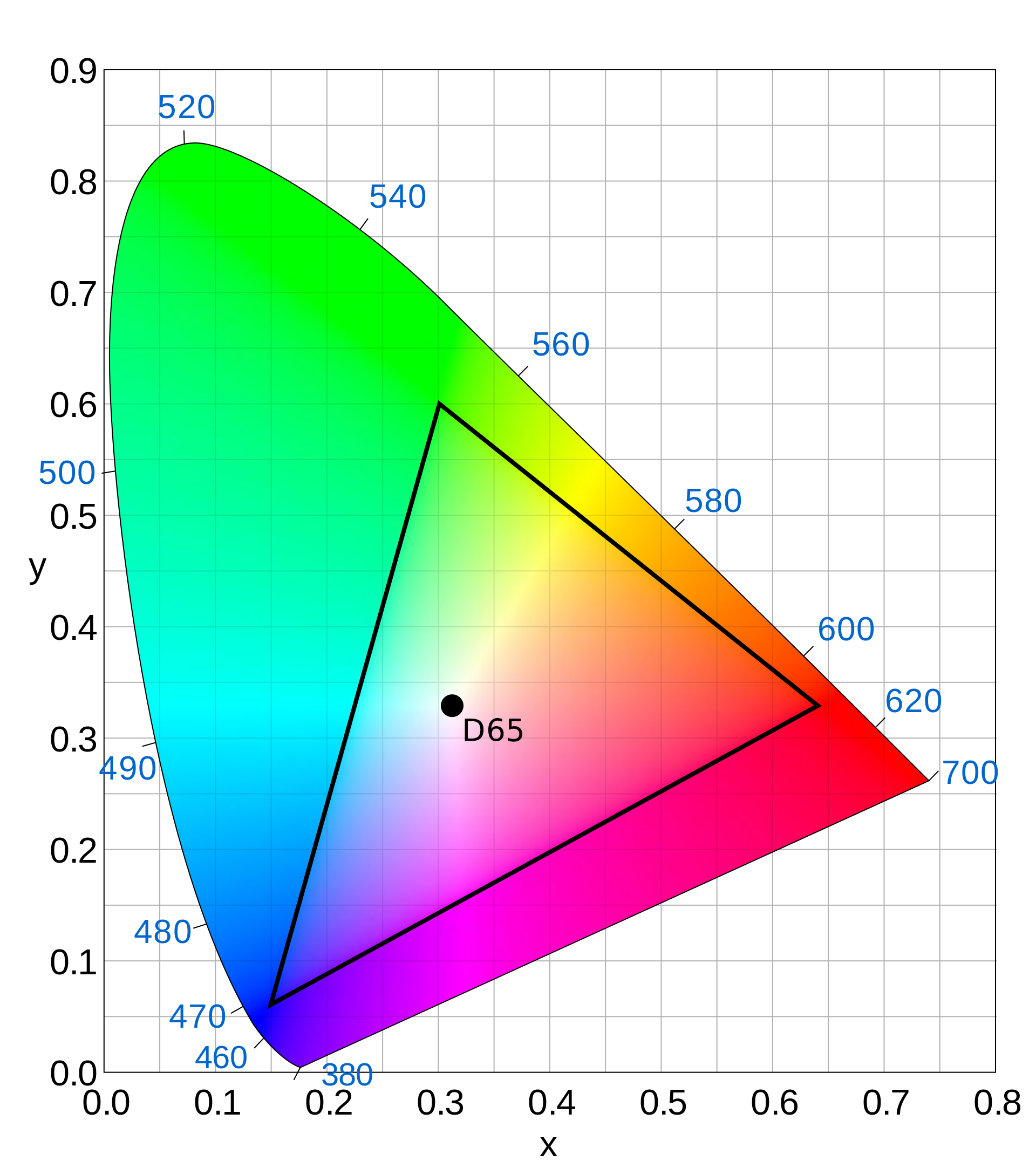BT.709 / Rec.709
also known as Rec.709 and ITU 709
Description
BT.709 primaries shown on the CIE 1931 xy Chromaticity diagram. All chromaticities of the BT.709 Color gamut fall within the triangle that connects the primaries. This includes Illuminant D65, the white point.
A standard developed by ITU-R for image encoding and signal characteristics of high-definition television.
The most recent version is BT.709-6 released in 2015. BT.709-6 defines the Picture characteristics as having a (widescreen) aspect ratio of 16:9, 1080 active lines per picture, 1920 samples per line, and a square pixel aspect ratio.
The first version of the standard was approved by the CCIR as Rec.709 in 1990 (there was also CCIR Rec. XA/11 MOD F in 1989), with the stated goal of a worldwide HDTV standard. The ITU superseded the CCIR in 1992, and subsequently released BT.709-1 in November 1993. These early versions still left many unanswered questions, and the lack of consensus toward a worldwide HDTV standard was evident. So much so, some early HDTV systems such as 1125/60 and 1250/50 were still a part of the standard as late as 2002 in BT.709-5.
